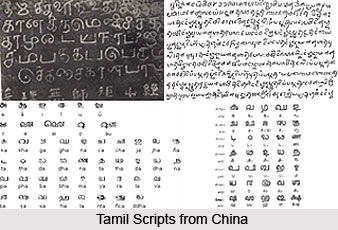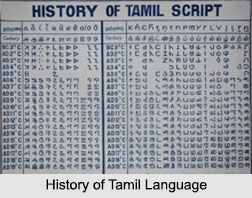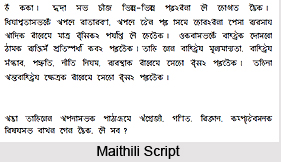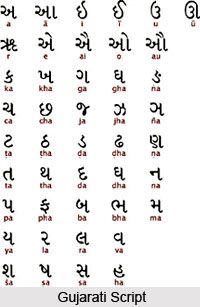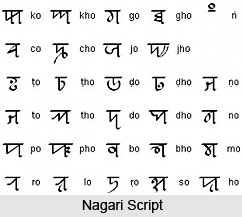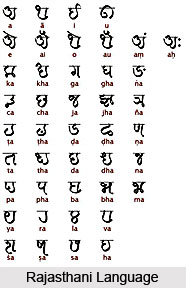 Generally the name of a language is given after the name of the region, province or state. Sometimes the language is also called either after the name of its major dialect or the people using it. The name Rajasthani is given after the name of the state and is universally accepted. It is obvious that the name Rajasthani is new. The old and popular name was Maru Bhasa (used by Gopal Lahori in his Ras-Vilas in 1587 AD). This has also been called as Maru Bhum Bhasa (by Mancch Kavi in his Raghunath Rupak Gitan Rau), Maru-Bani (by Surajmal Misran in his Vans Bhaskar) and Maru Bhasa (by Asiya Modi in his Pabuprakas).
Generally the name of a language is given after the name of the region, province or state. Sometimes the language is also called either after the name of its major dialect or the people using it. The name Rajasthani is given after the name of the state and is universally accepted. It is obvious that the name Rajasthani is new. The old and popular name was Maru Bhasa (used by Gopal Lahori in his Ras-Vilas in 1587 AD). This has also been called as Maru Bhum Bhasa (by Mancch Kavi in his Raghunath Rupak Gitan Rau), Maru-Bani (by Surajmal Misran in his Vans Bhaskar) and Maru Bhasa (by Asiya Modi in his Pabuprakas).
Evolution and Growth of Rajasthani Language
The evolution and the stages of growth of Indo-Aryan languages may be traced thus: (1) Vedic `Chandas` in Sanskrit (from 1500 B.C. to 500 B.C.), (2) Prakrit-Apabhramsa (from 500 B.C. to 1000 AD) and (3) `Desi-bhasas` including Rajasthani language (from 1000 AD onwards). Out of the six major forms of Prakrit language, namely, Pali, Ardha-Magadhi, Saurseni, Maharastri, Magadhi and Paisaci, the first two are supposed to be comparatively older. Buddhist and Jain scriptures were written in Pali and Ardha-Magadhi respectively. Although a form of Prakrit, usually Pali language is not termed as Prakrit.
The growth and development of Rajasthani language was dependent on several types of languages, for instance, Prakrit Apabhramsa Rajasthani, Maru-Gurjar, Pingal and several colloquial languages. Each of these languages, in their own way, nourished Rajasthani language and influenced the original Rajasthani dialect.
Prakrit-Apabhramsa
Historically the evolution of Rajasthani may be linked up with Saurseni Prakrit. It was originally the language of Mathura region and was extant in the west including Gujarat and Saurastra. This western form developed some peculiarities such as:-Initial sound `dw` becomes `b` (Dwaraka-Baraka, Dwe-Be). Ks changes to `cch` or `ch`. Thus, Ksudra becomes chudda.
Maru-Gurjar
From the popular Gurjar Apabhramsa influence in the western parts of the country including the present states of Rajasthan and Gujarat, the early Rajasthani language developed and started taking a definite linguistic pattern during the 11th century. The early Rajasthani and Gujarati were identical till about 1450 AD. The separation started thereafter. To this common language various names, such as Maru-Sorath, Old Western Rajasthani, Old Gujarati, Old Rajasthani and Maru-Gurjar have been given. The last of the names, namely, Maru-Gurjar is more appropriate. The literature of the early period (1050-1450) is, thus, a common heritage of both the languages-Gujarati and Rajasthani.
Maru Bhasa
The Maru-Bhasa is also called Dingal. Both were treated as identical up to the end of the 19th century. Dingal is considered to be synonymous with Maru Bhasa, literary and otherwise, poetic speech and the speech of the people. The earliest mention of both Dingal and-Pingal as linguistic entities, however, occurs in a `chappay` by a saint poet Surjandas Puniya (1583-1691), composed about 1640 or earlier.
Pingal
Generally Pingal means prosody but in Rajasthan this term came to be used for language as well. Braj Bhasa mixed with Rajasthani is also called Pingal. The diction and style of Maru Bhasa poetry are adopted in Pihgal but the grammatical structure is of Braj Bhasa or akin to it. Thus, it differs from pure Braj Bhasa on one side and Pingal or Rajasthani on the other. The vocabulary of Pingal also includes popular words of Rajasthani. For instance, the word `Kad` (from Sanskrit `Kati`) means waist in Rajasthani. The `d` changes to `v.` By making this change the word `Kar` was formed in Pingal. Generally `Kar` means hand but here in Pingal it would mean waist also. Exceptions apart, however, Pingal has been poetic speech only.
Besides these in the first half of the fifteenth century traits of two forms of Rajasthani, the Western and the Eastern are noticed. There are five branches of Rajasthani:
(1) Marwari-Mewari is spoken in the old princely states of Jodhpur, Bikaner, Jaisalmer, Udaipur, Sirohi, Sekhawati region of Jaipur, part of Kishangarh and Ajmer-Merwara, some parts of Punjab and Haryana with slight variations.
(2) Jaipuri-Hadauti, a popular speech in the old princely states of Jaipur (except Sekhawati) Lawa, Tonk, part of Kishangarh and Ajmer-Merwara and the Hadauti regions including Bundi, Kota and Jhalawar.
(3) Mewari-Ahirwati covers some parts of the old Bharatpur distrcit, Alwar, some parts of Gurgaon in Haryana and Mathura in Uttar Pradesh. It carries slight influences of Braj and Haryani.
(4) Malwi has the characteristics of Marwari and Jaipuri-Hadauti and is spoken in the Malwa region of Madhya Pradesh. It has a slight tinge of Gujarati as well as Marathi language and Bundeli.
(5) Bhlli is popular in the princely states of Dungarpur, Banswara and some parts of Mewar. It is also slightly influenced by Gujarati language. Banjari and Gujari, spoken in different parts of the country, have affinity with Rajasthani, as most of the Banjaras and Gujars were originally the residents of Rajasthan. Nepali and Dakkhini Hindi are also remotely connected with Rajasthani. Speech in the territory of the princely states of Bharatpur, Dholpur and Karoli is mostly influenced by Braj.
Another variation of speech which may be called Uttaradhi (belonging to the north) or Ganganagari has emerged in Sriganganagar district and adjoining areas of Haryana and Punjab. In its accentuations and aspirated sounds, there appears to be an impact of Haryani and slightly of Punjabi. The difference also lies in the use of relative case which is formed by `go,` `ga,` `gi.` Its development was very rapid due to movement of people from neighbouring areas to the new vocational situations created by the construction of Gang canal and later on account of the exodus from the present Punjab in Pakistan as a sequel to the country`s partition in 1947 AD. Mixture in speech is usually a consequence of meeting of different people on common grounds.
Except slight variation in accentuations and colloquial uses, minor case-endings and verbs of future tense etc., there is uniformity in grammatical structure in all the branches mentioned above.
Of all the branches, Marwari has the oldest, richest, and a varied and unbroken literary tradition.
